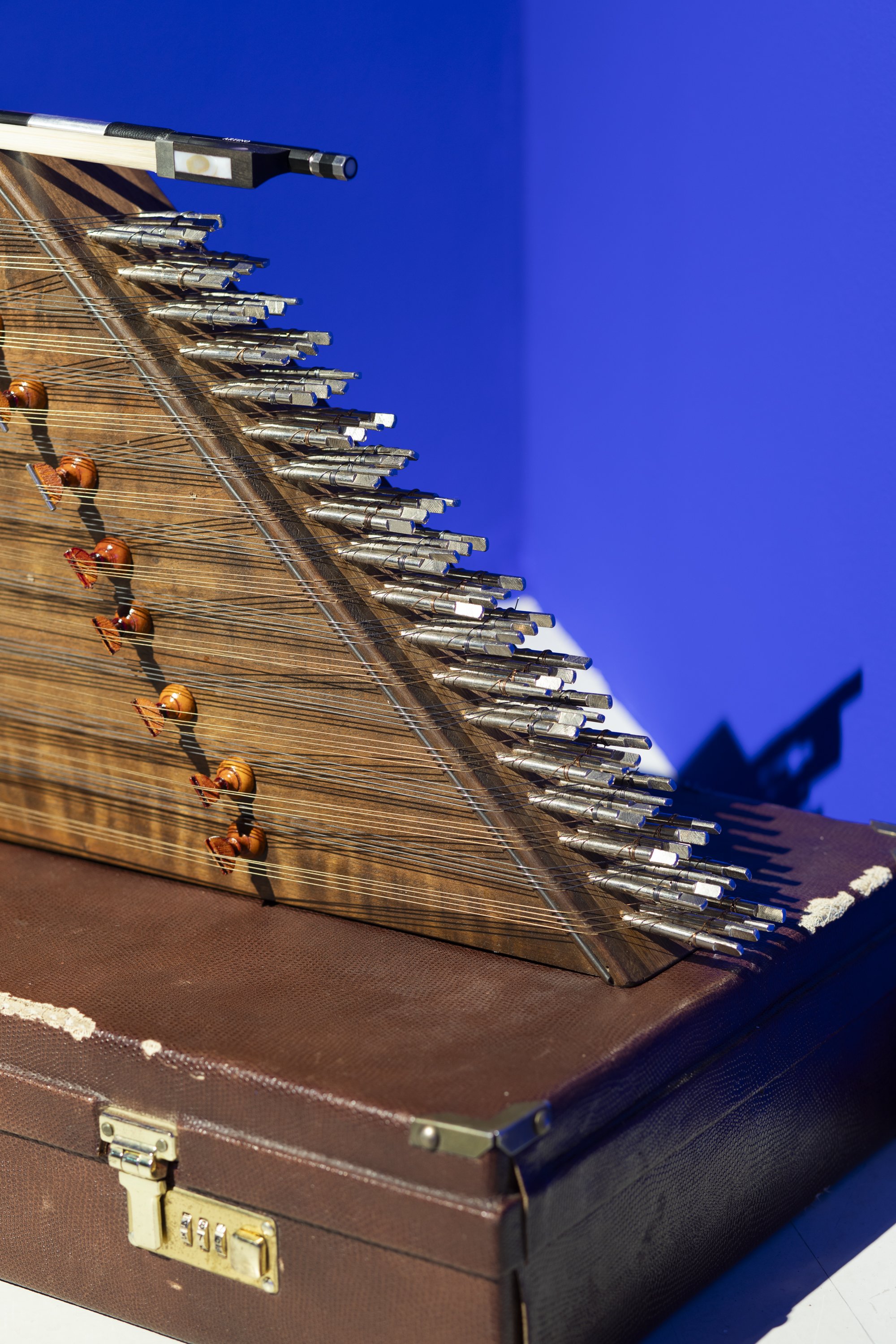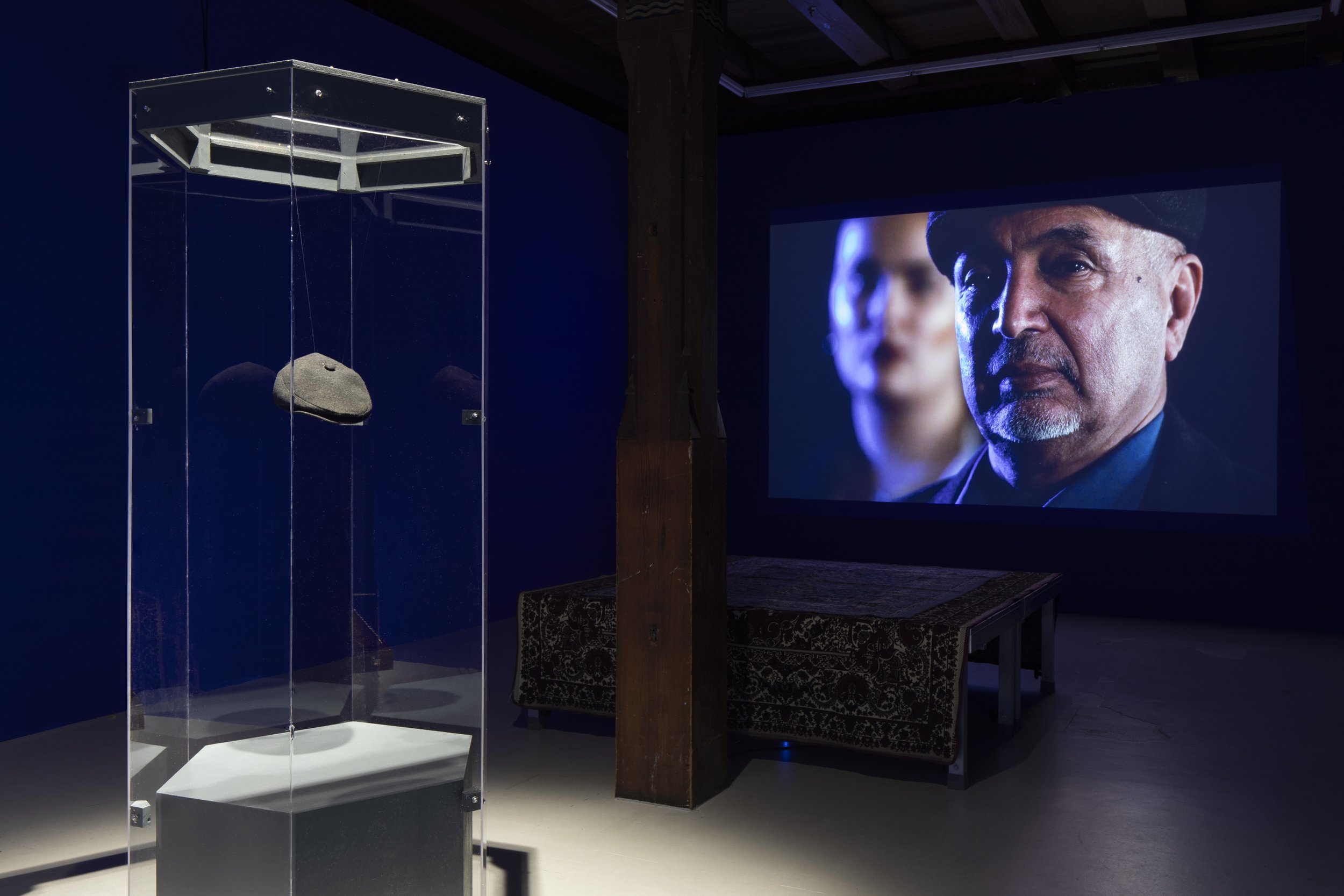
BLUE(S) XXL
SIMIN STINE RAMEZANALI
Nikolaj Kunsthal, Copenhagen, 12 April – 26 May
Through various media and artistic expressions, artist and musician Simin Stine Ramezanali brings the many layers of meaning of the colour blue into the exhibition space. Historically, the blue colour ultramarine has been an important commodity. It was originally mined from the stone lapis lazuli in Afghanistan in the Middle East. The colour first really entered Western art history in the Renaissance and has been assigned various cultural, religious and emotional meanings around the world. In music and art historical sources, the colour can symbolise the portal between Earth and the underworld, the blanket behind the stars and the great mysteries of the universe, and the colour of sorrow that cannot be washed away. In music there is a whole genre named after the colour blue. Blue is more than just a colour.
Central to BLUE(S) XXL is the audio and video work MOURNING XXL (16 min.), a story about a father and his daughter who find reflections of themselves and their history in the glass cases filled with so-called Islamic works of art and artifacts. The dialogue between father and daughter in front of the historical objects opens up a deeper conversation about identity, memory and what it means to belong. The work provides several perspectives on moving between identities, cultural affiliations and carrying a grief that cuts across the personal and the collective.
The exhibition shows a modified version of one of the glass cases from the audio and video work. In it, a sixpence from a personal collection is on display. In one corner, there is an untuned santur – an ancient stringed instrument with deep roots in Middle Eastern musical tradition. The out-of-tune santur functions here as both a quiet expression of and a violent soundtrack to the unpredictable course of grief. The exhibition thereby challenges conventional exhibition methods, as Ramezanali here uses imitation as an artistic and critical approach. Through the viewer’s reflection in the glass case, we are involved in reflecting on how and why certain objects gain museum attention, while others are ignored, as in the case of santur.
The exhibition is not only a processing of unresolved grief and memories; it also links to important historical and political events that reach beyond the personal and into our collective memory and universal emotions. The exhibition treats the mourning process as the great contradictory being that it is, containing both love, longing, joy, anger and melancholy. At the same time, the works in the exhibition also delve into how exhibition institutions select and present objects, telling specific stories that help to negotiate how identity, value and history are viewed by both society and oneself.
The exhibition is curated by Koffi & Højgaard.
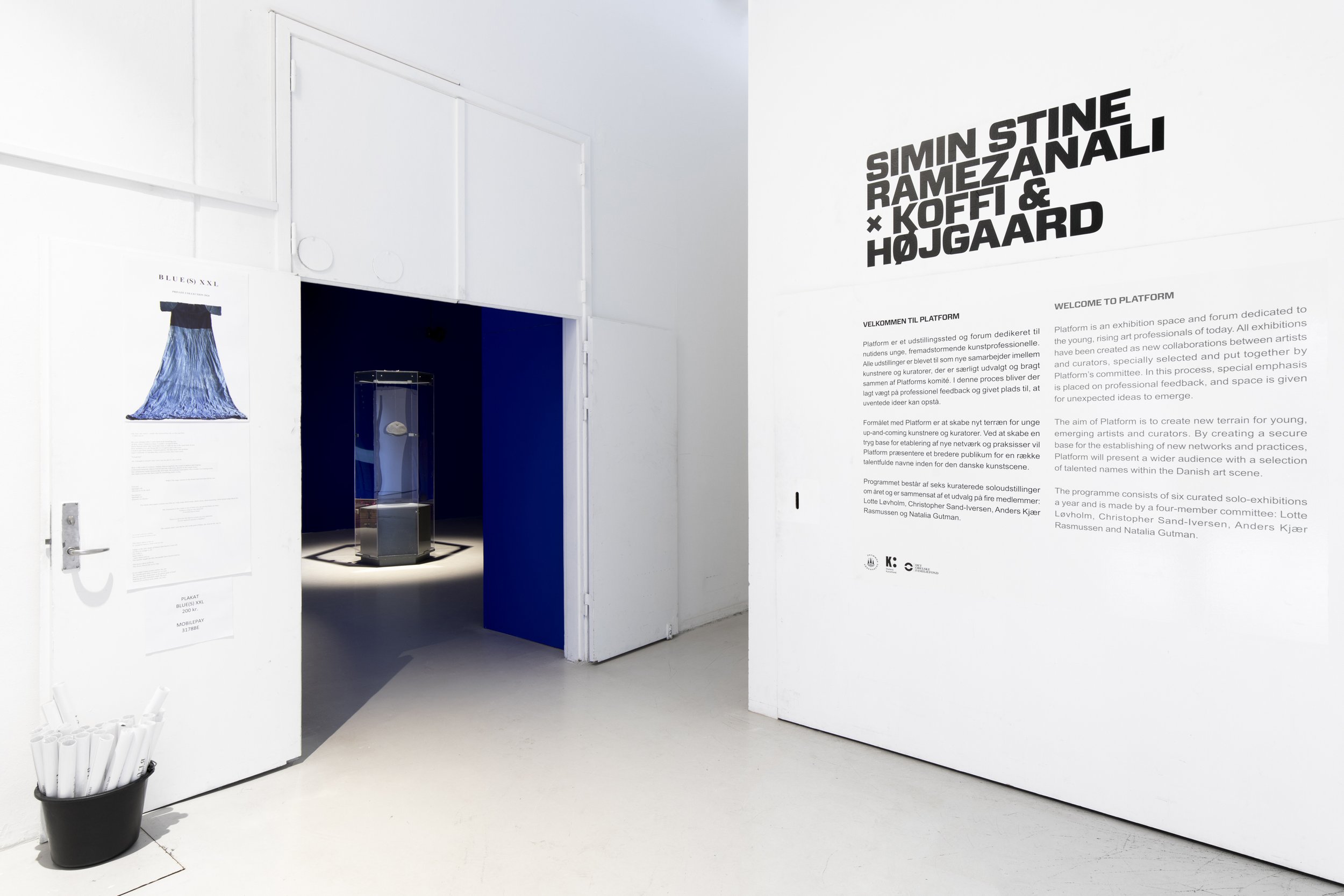

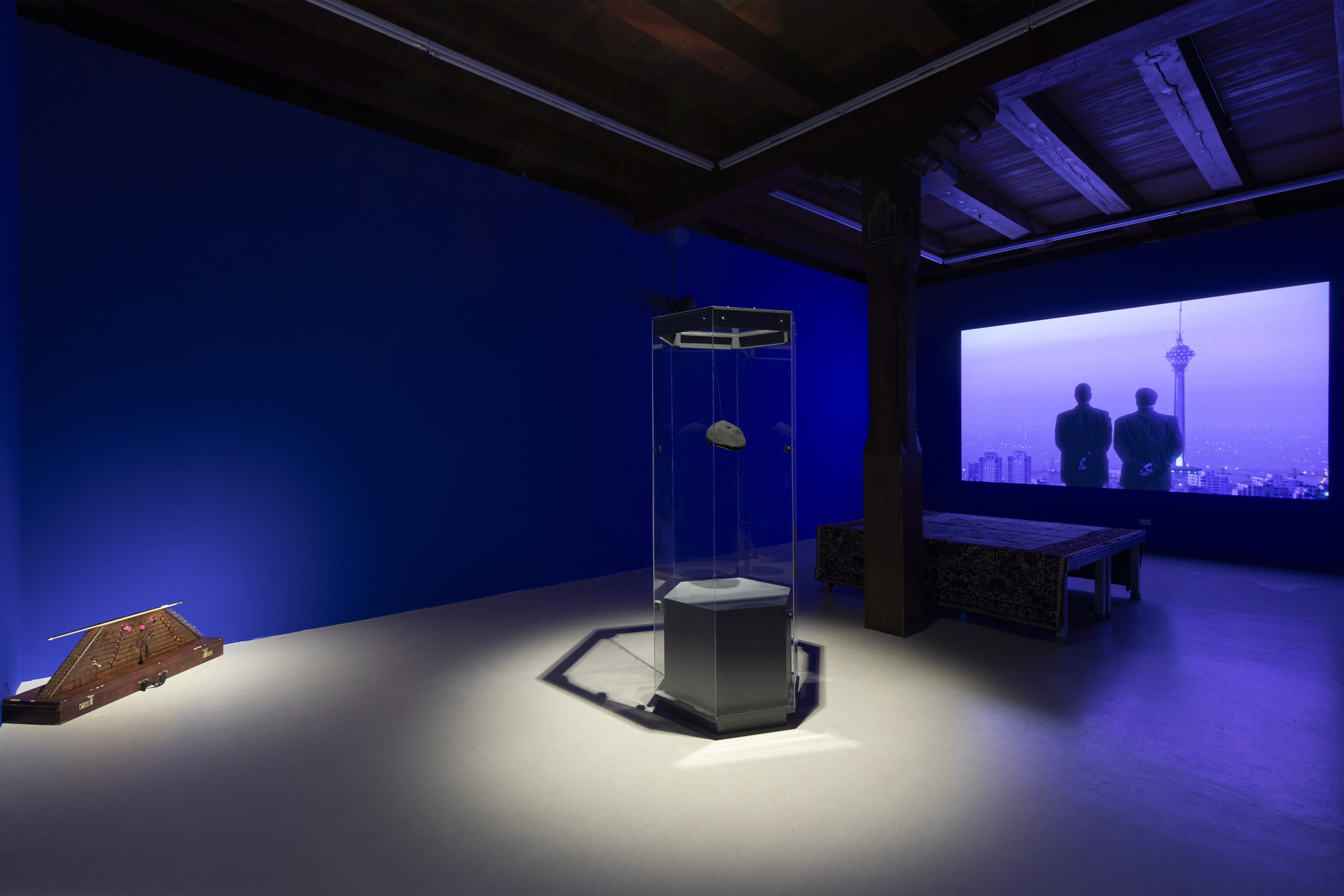
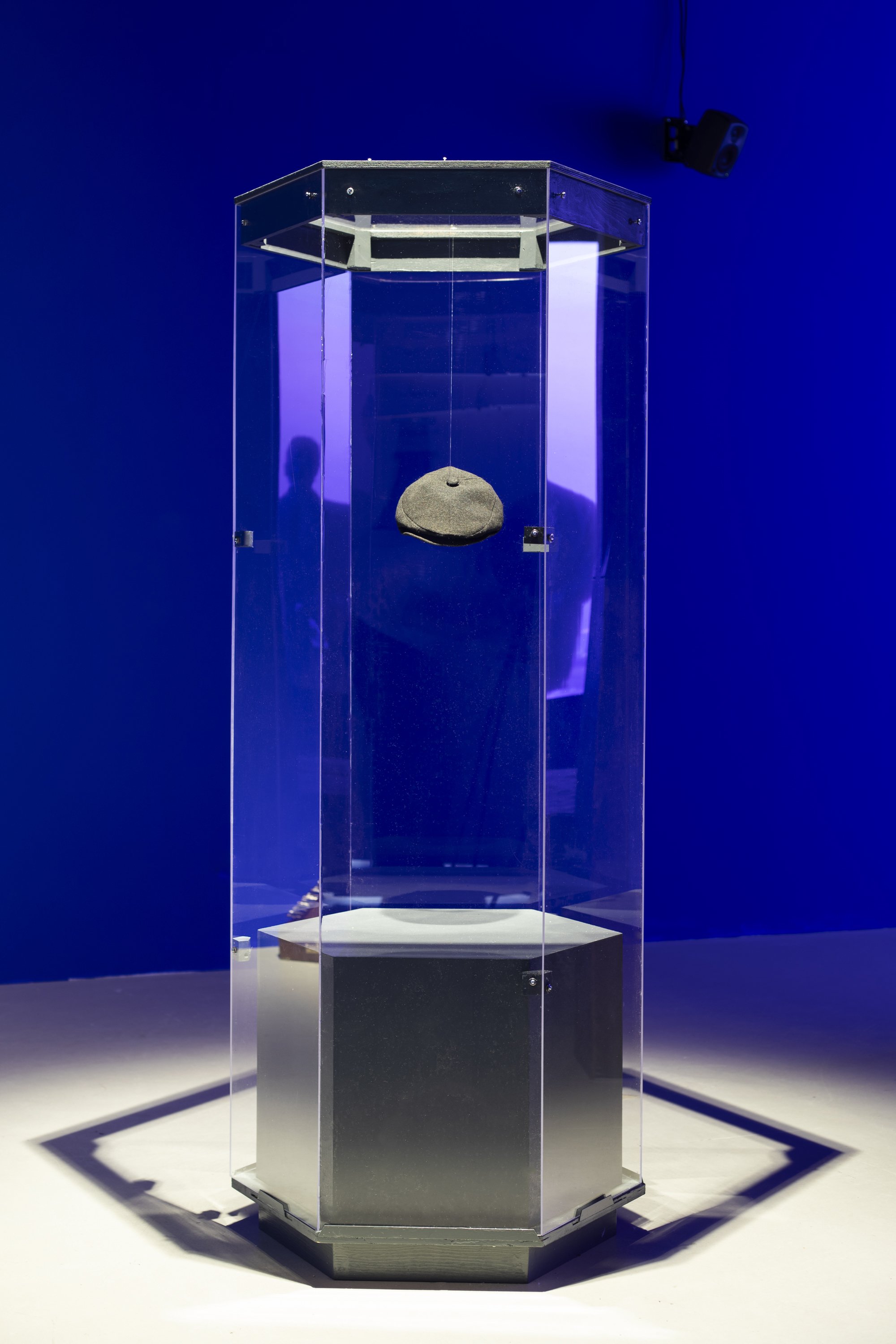
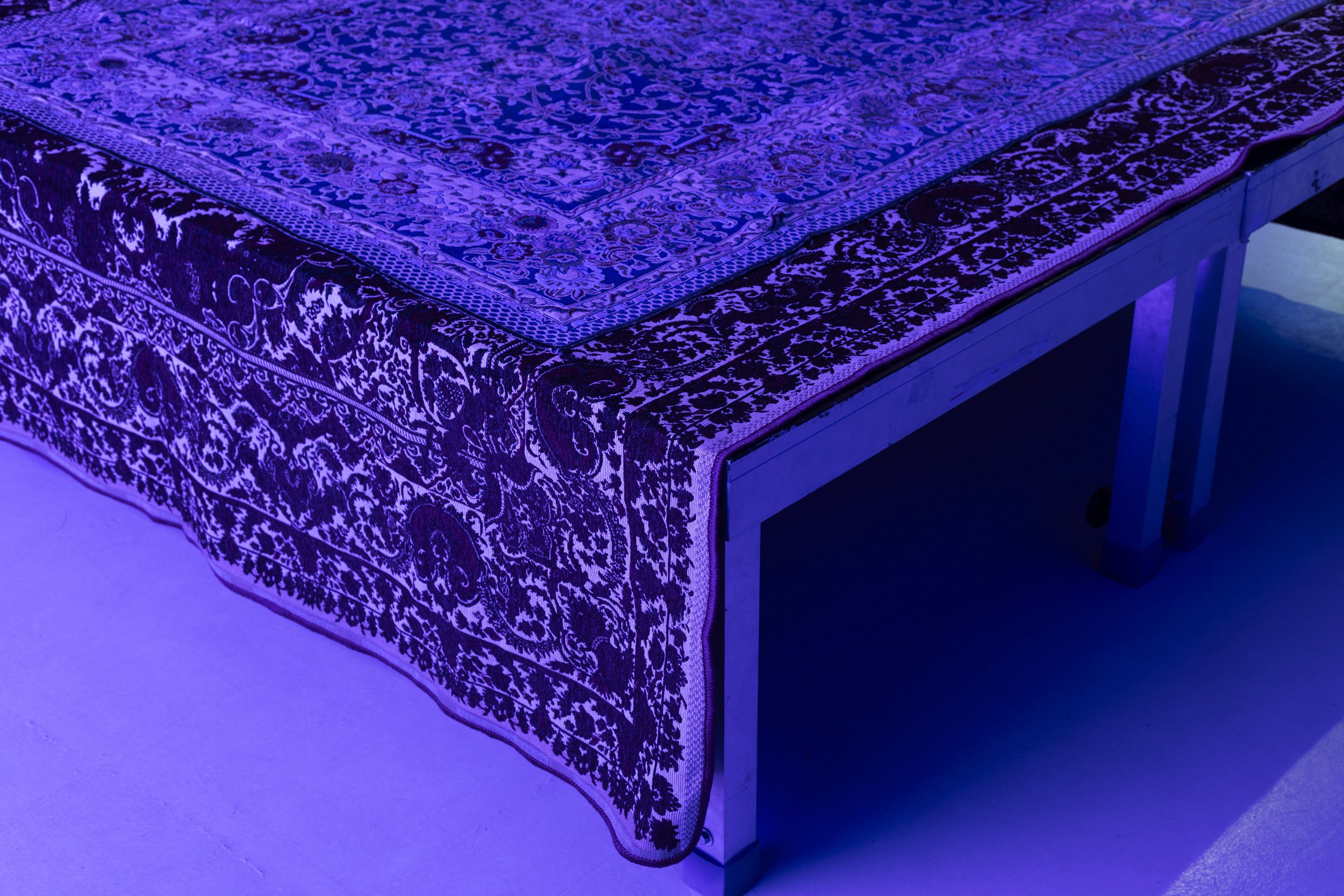
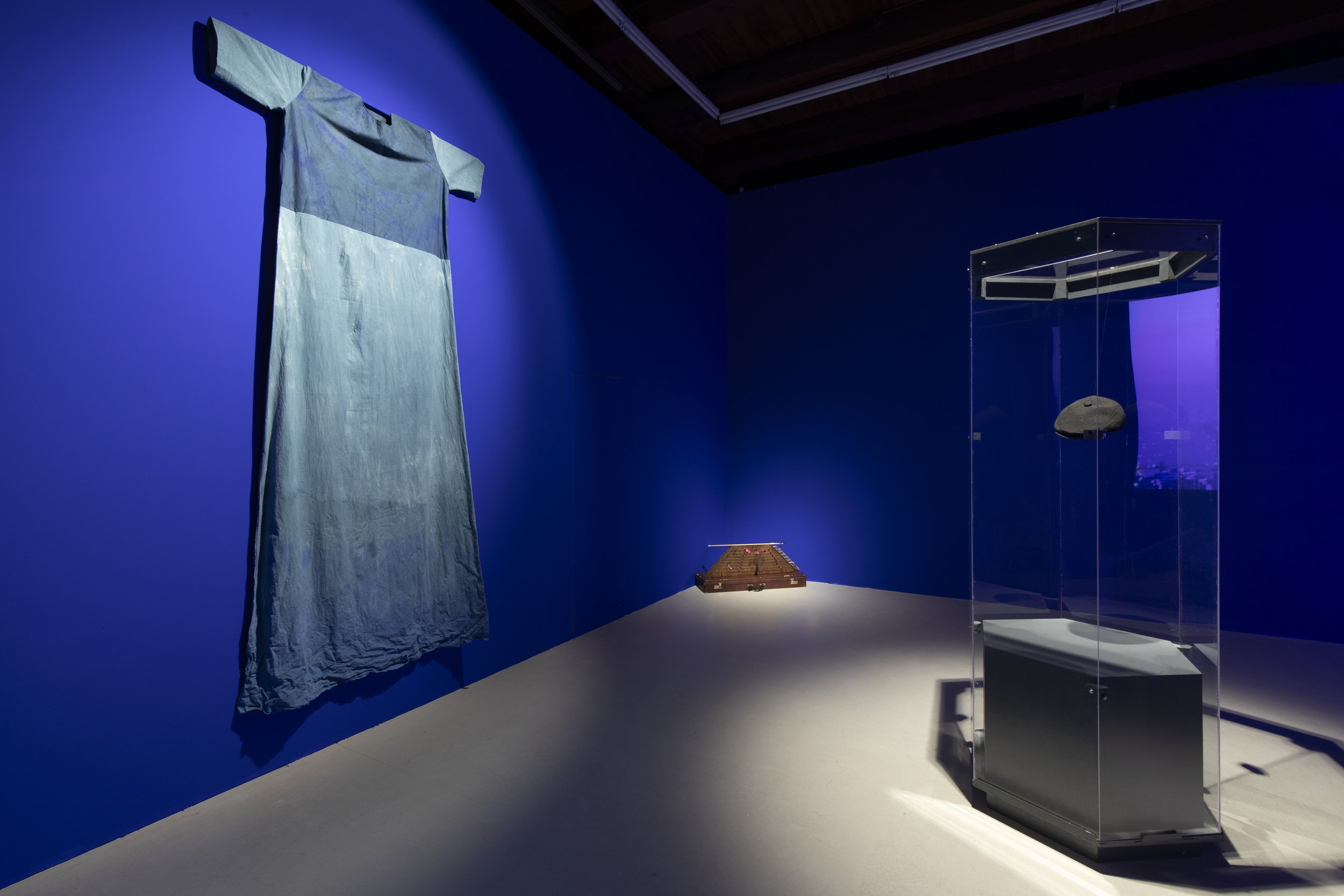
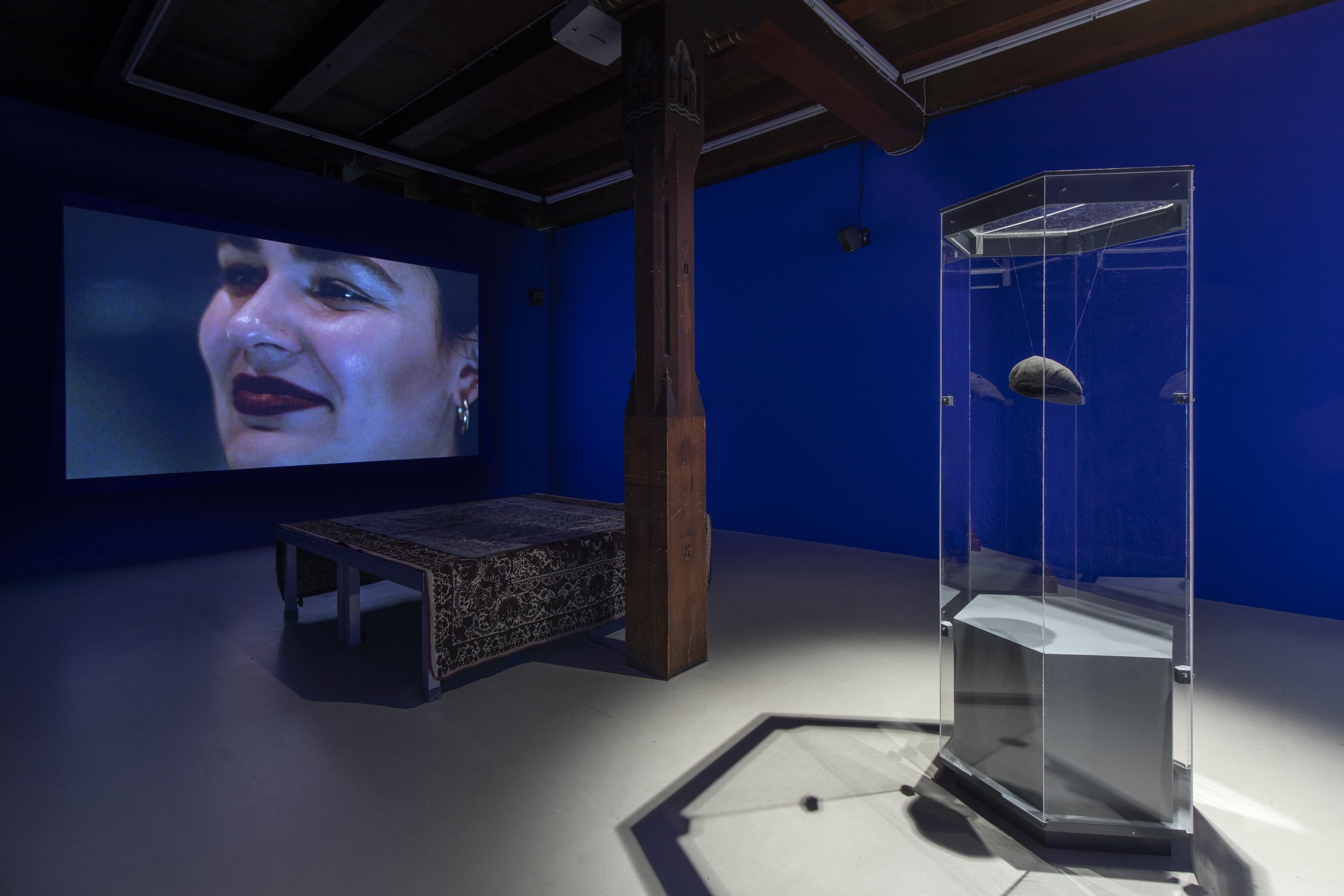
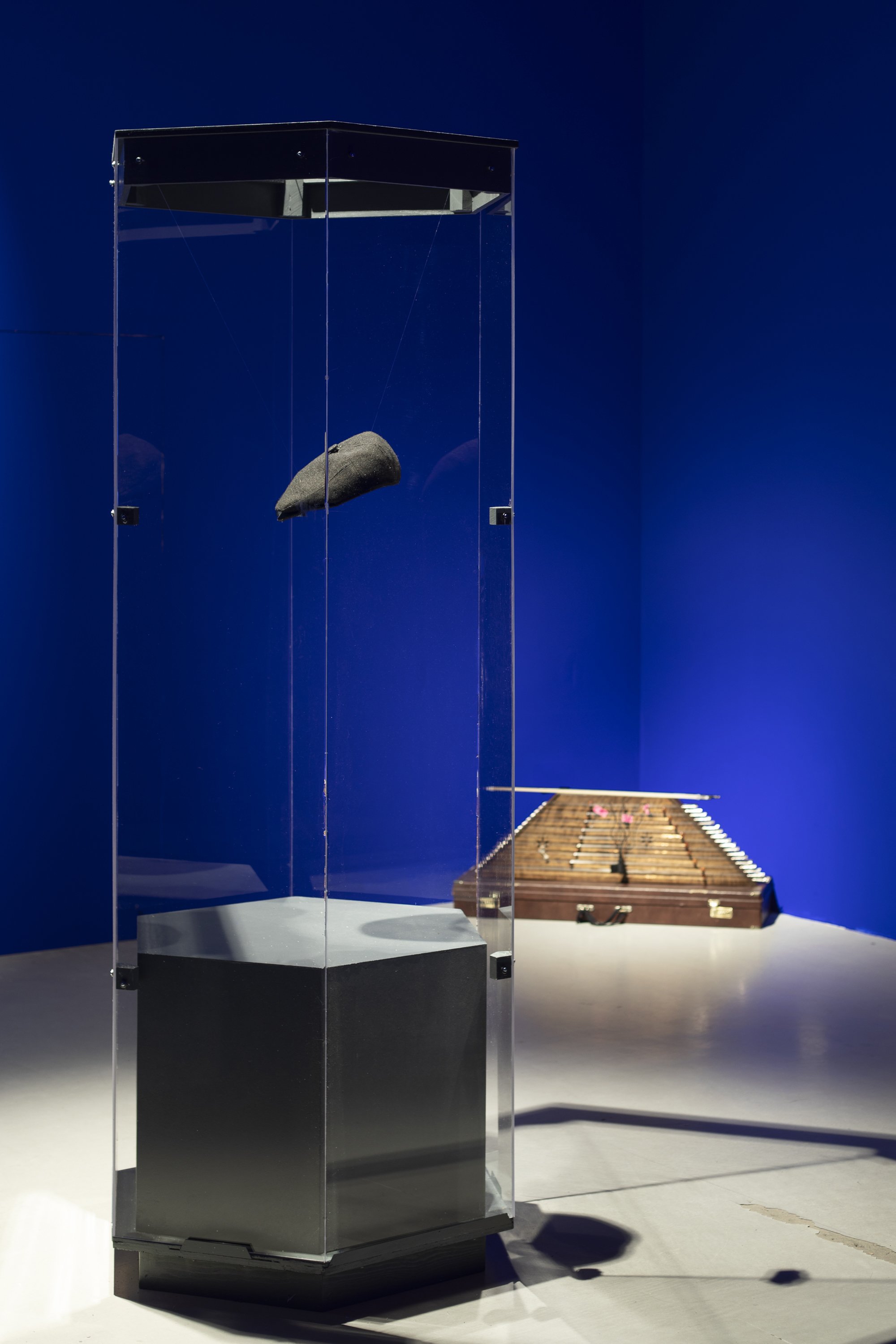
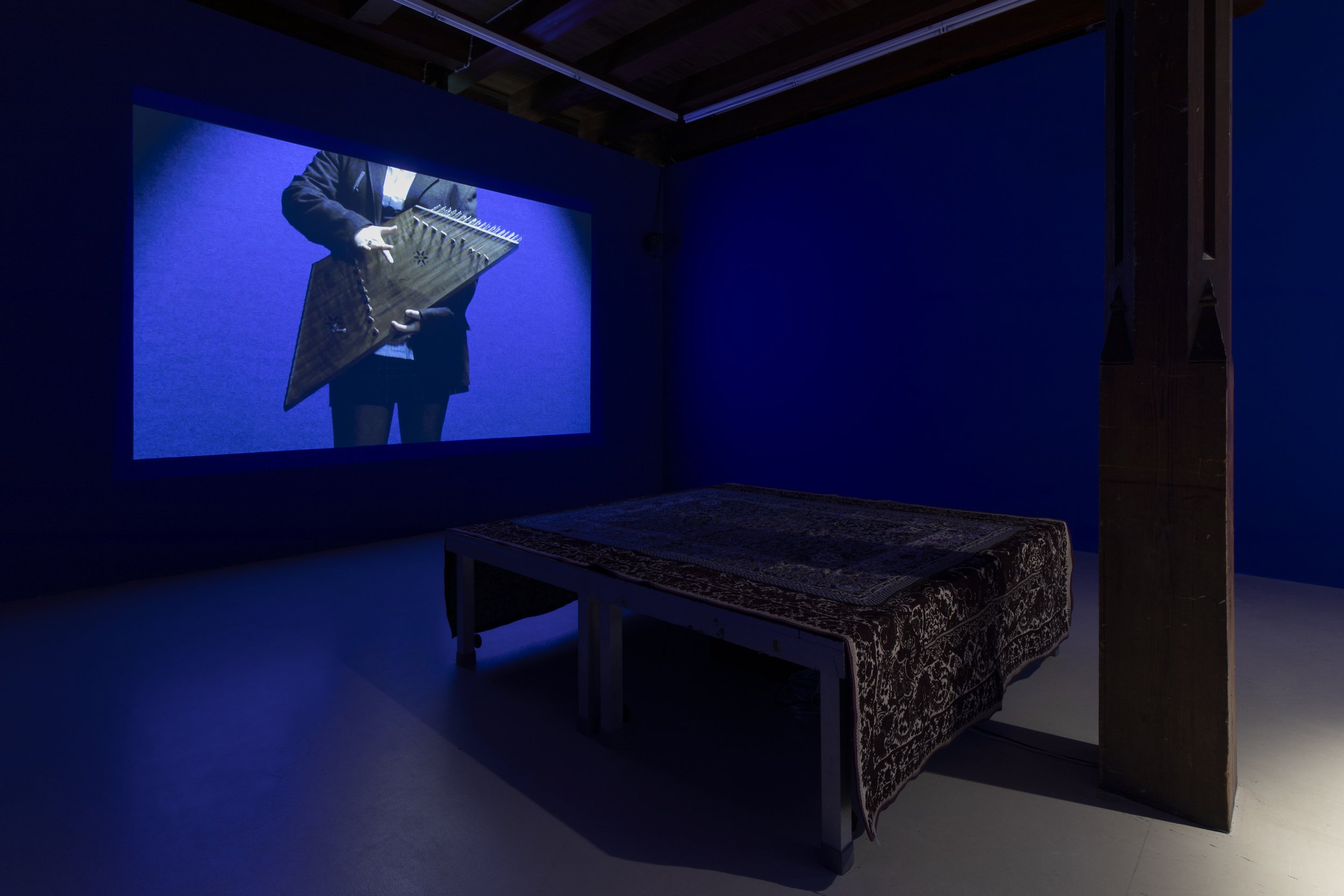
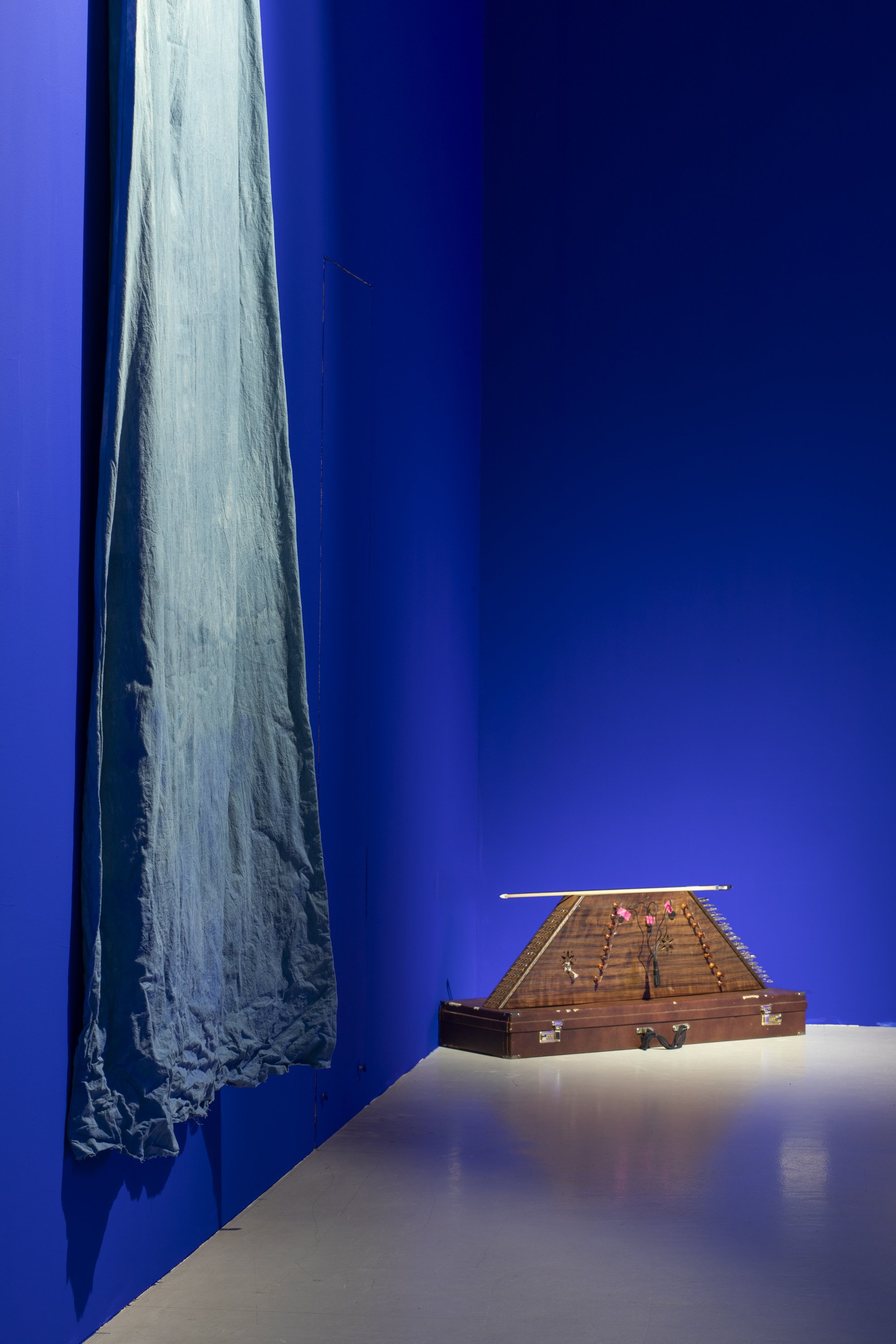
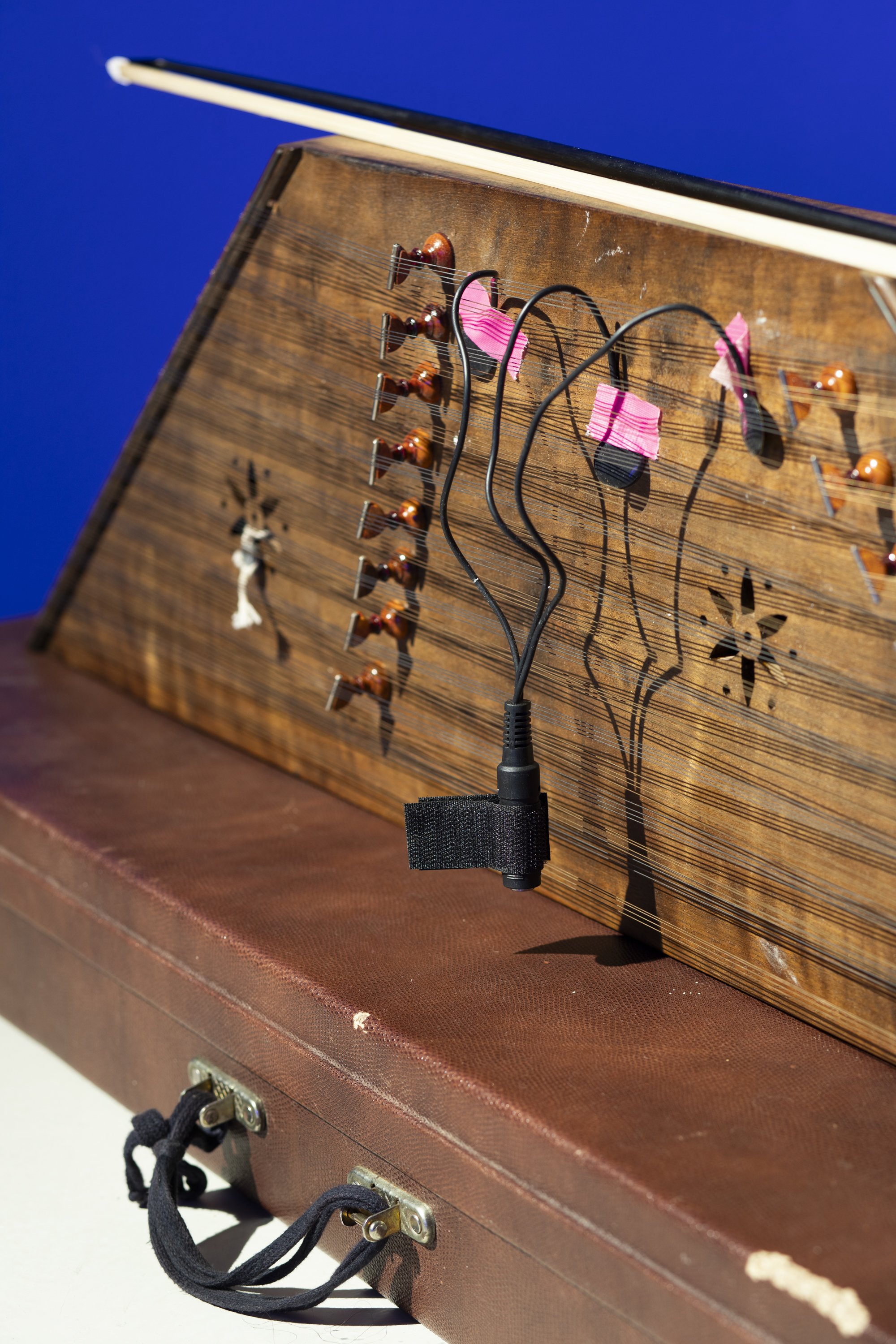
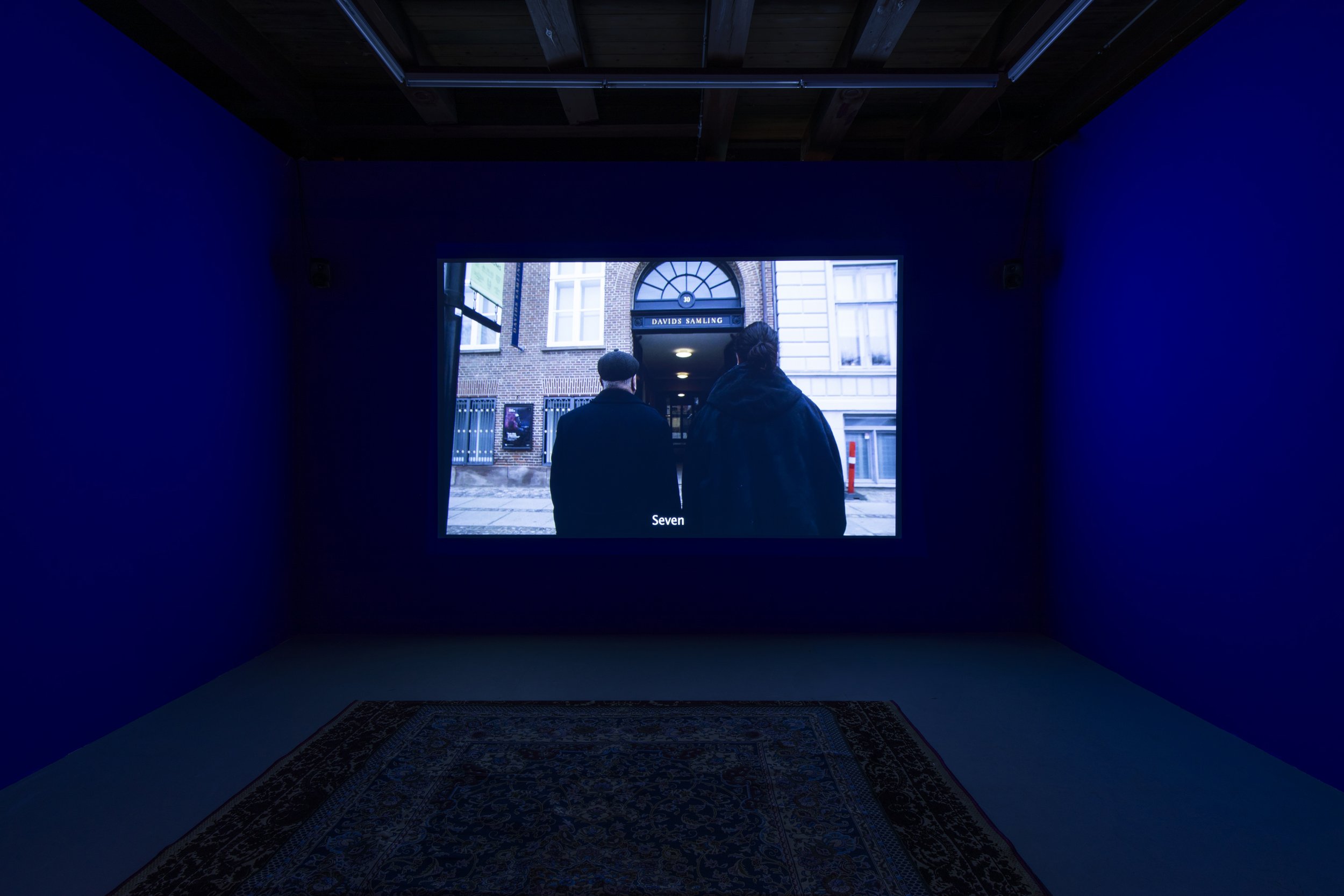
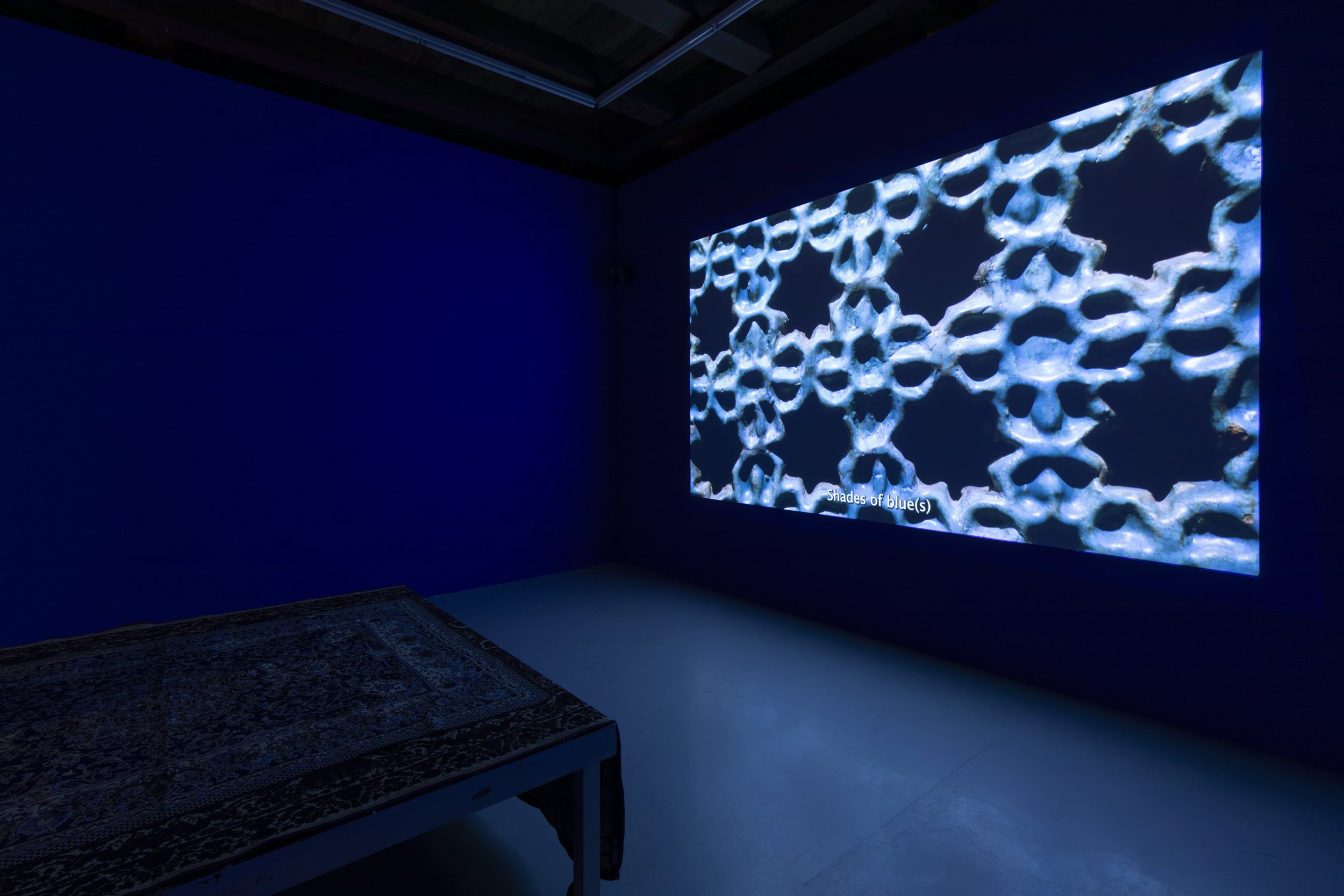
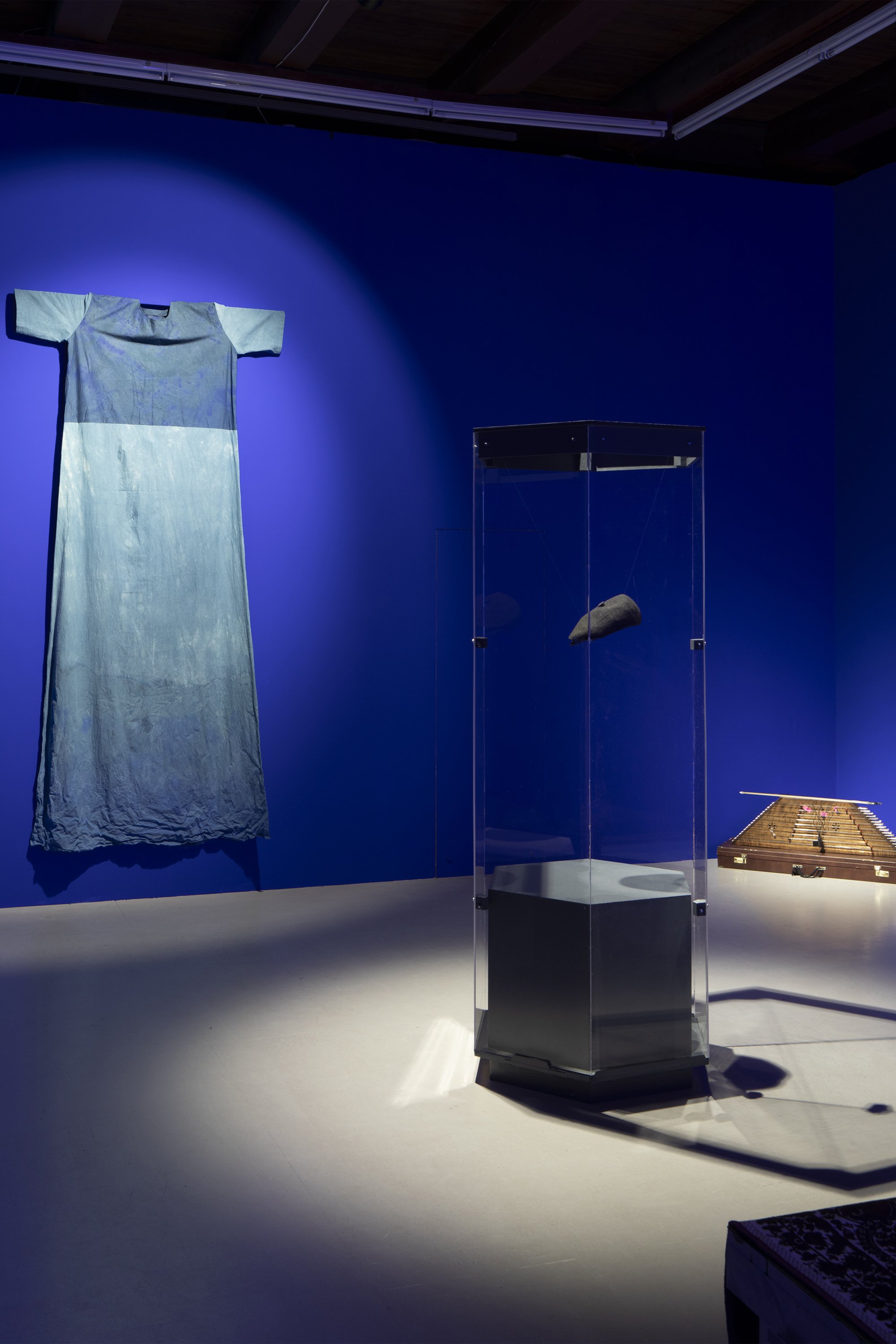
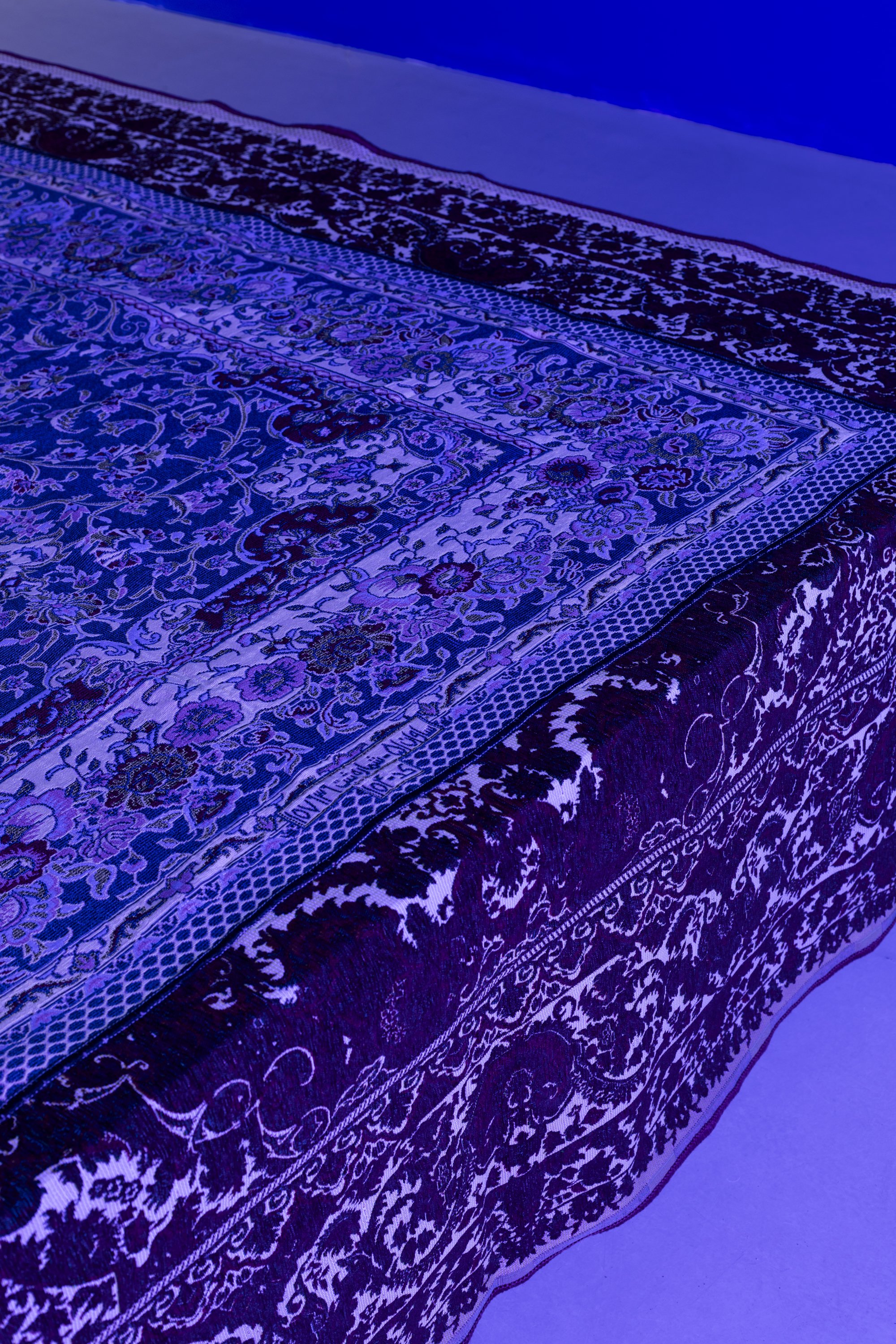
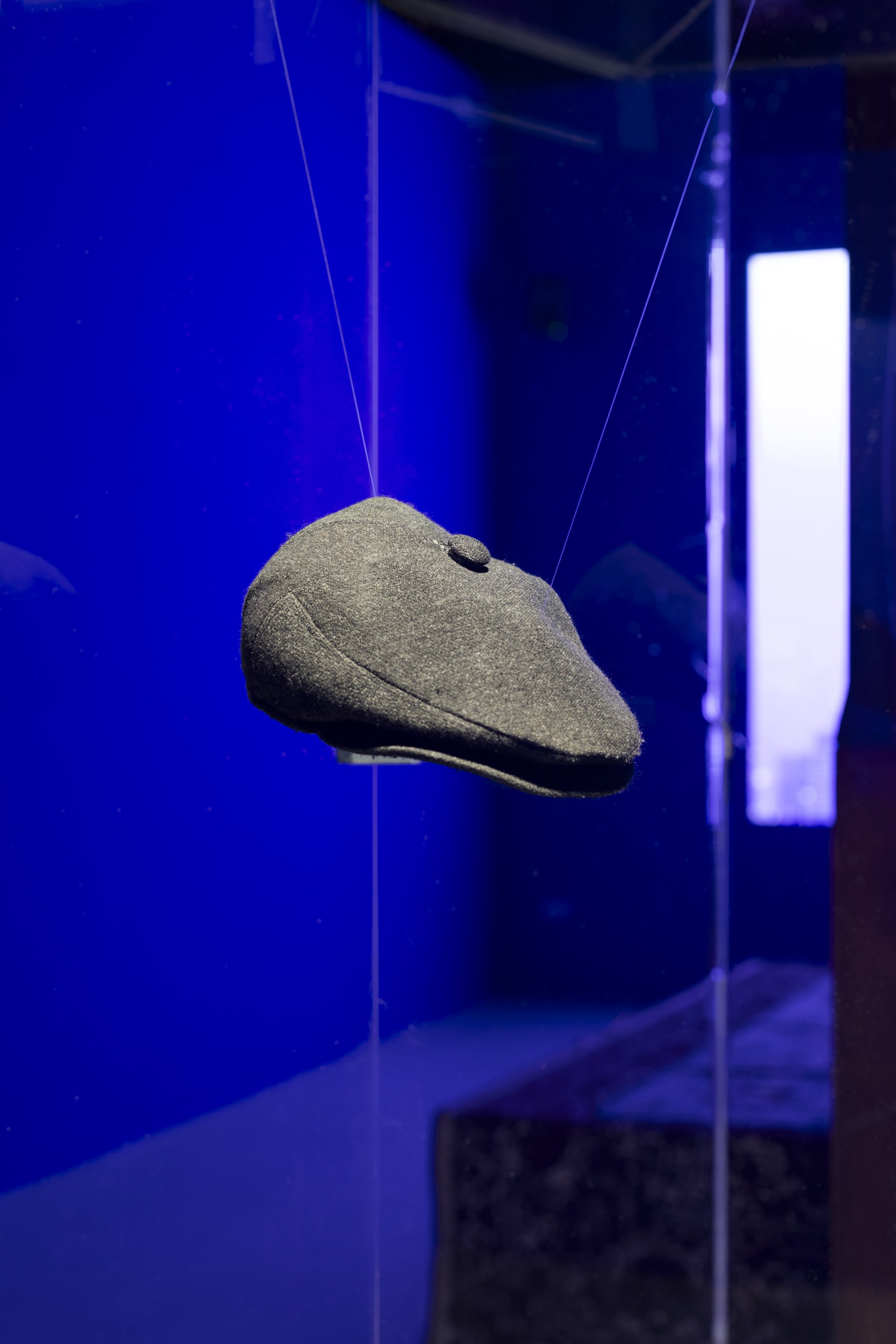
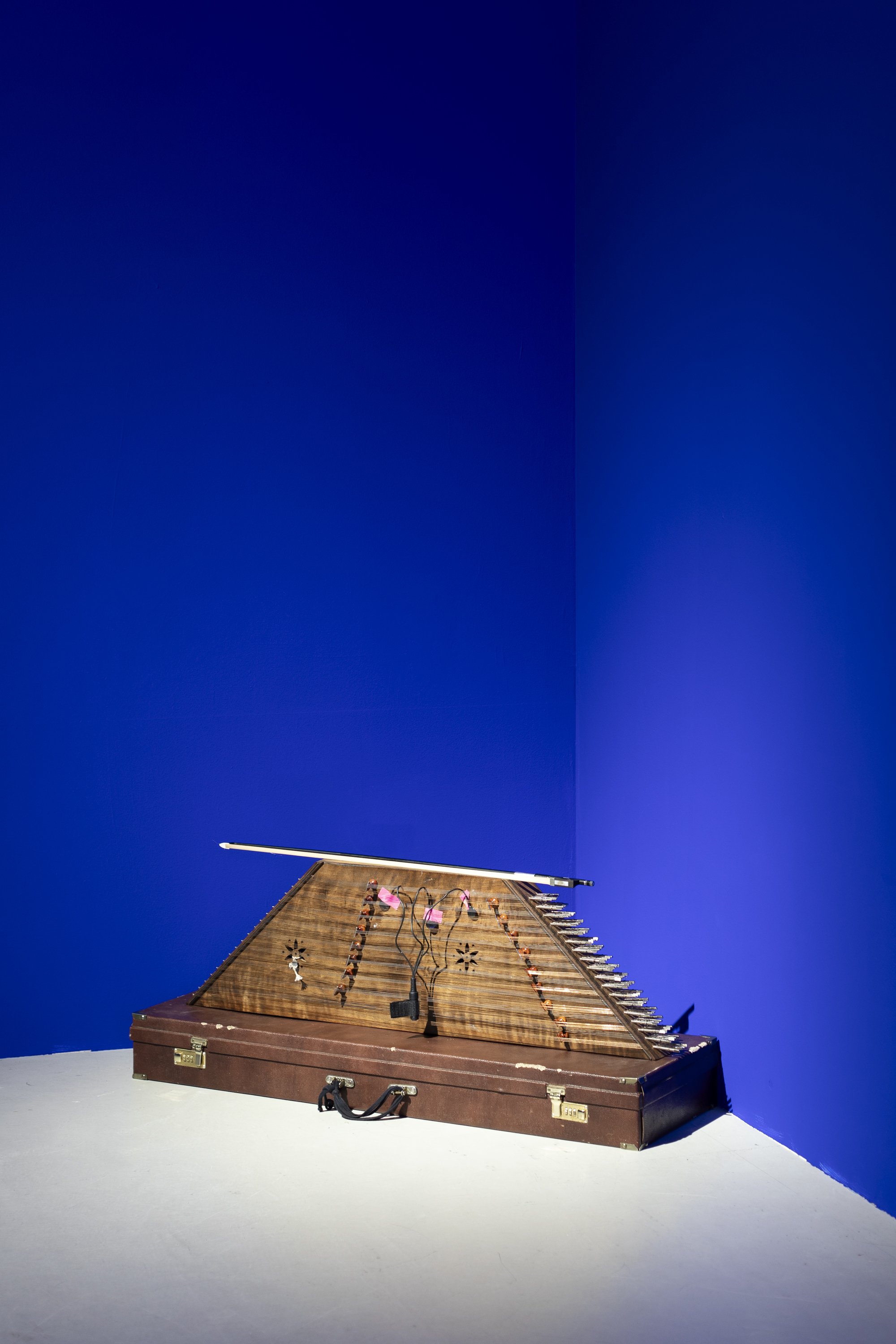
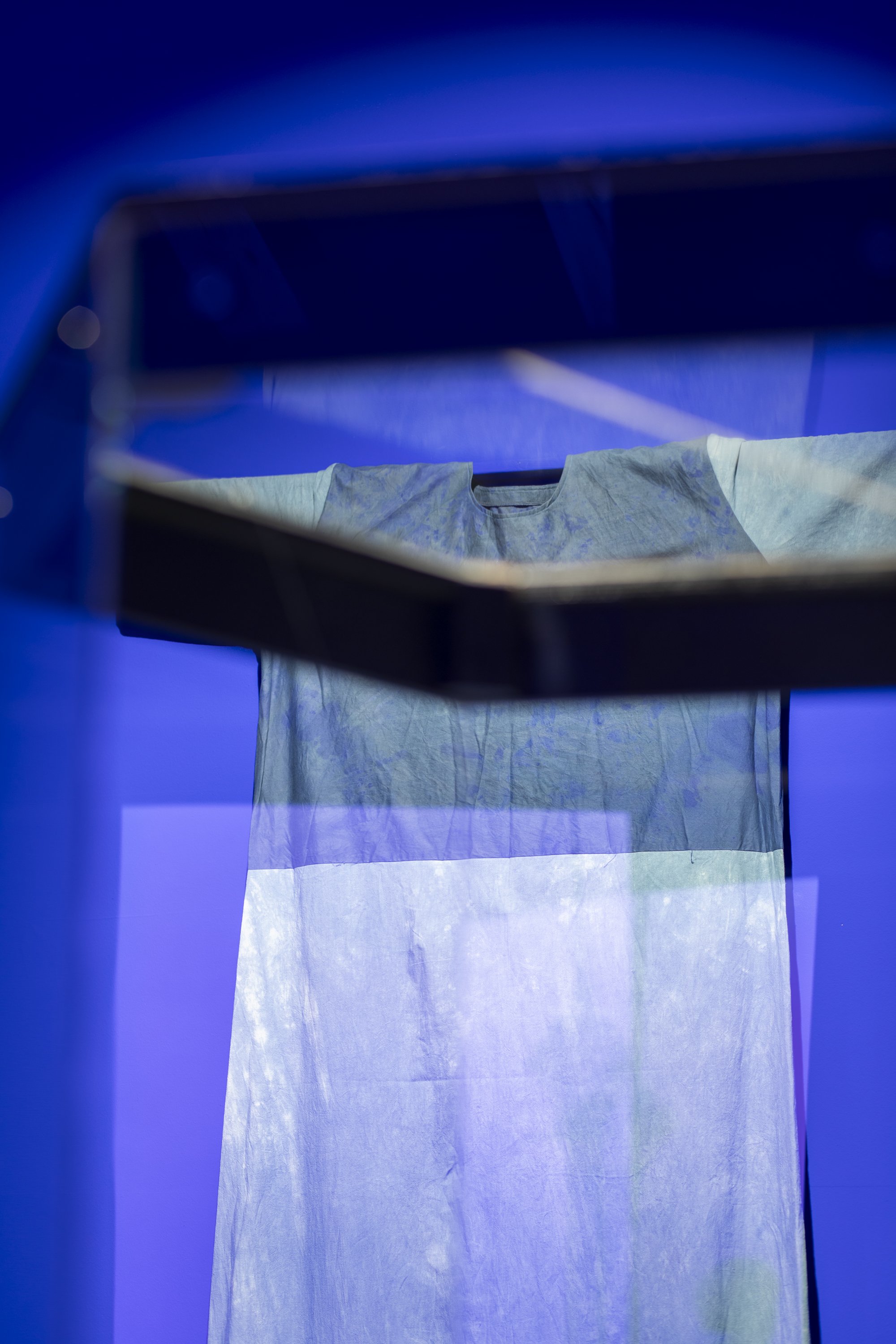
Installation views BLUE(S) XXL by Simin Stine Ramezanali, Nikolaj Kunsthal, 2024. Photo credit: Mads Holm
